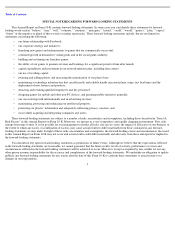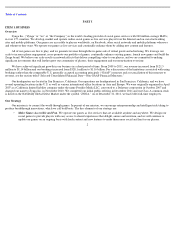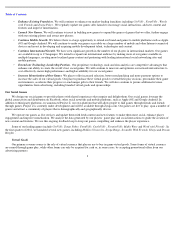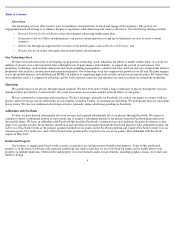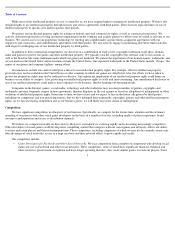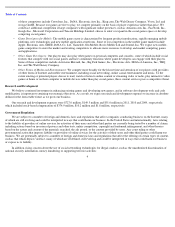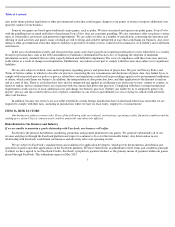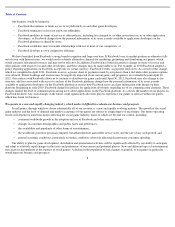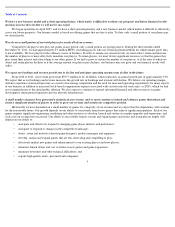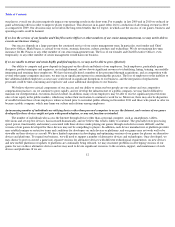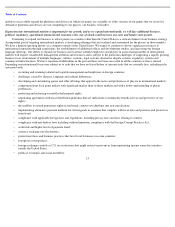Zynga 2011 Annual Report Download - page 13
Download and view the complete annual report
Please find page 13 of the 2011 Zynga annual report below. You can navigate through the pages in the report by either clicking on the pages listed below, or by using the keyword search tool below to find specific information within the annual report.
Table of Contents
We have a new business model and a short operating history, which makes it difficult to evaluate our prospects and future financial results
and may increase the risk that we will not be successful.
We began operations in April 2007, and we have a short operating history and a new business model, which makes it difficult to effectively
assess our future prospects. Our business model is based on offering games that are free to play. To date, only a small portion of our players pay
for virtual goods.
We rely on a small portion of our total players for nearly all of our revenue.
Compared to all players who play our games in any period, only a small portion are paying players. During the three months ended
December 31, 2011, we had approximately 2.9 million MUPs (excluding payers who use certain payment methods for which unique payer data
is not available). We lose players in the ordinary course of business. In order to sustain our revenue levels, we must attract, retain and increase
the number of players or more effectively monetize our players. To retain players, we must devote significant resources so that the games they
play retain their interest and attract them to our other games. If we fail to grow or sustain the number of our players, or if the rates at which we
attract and retain players declines or if the average amount our players pay declines, our business may not grow and our financial results will
suffer.
We expect our bookings and revenue growth rate to decline and anticipate operating margins may decline in the future.
From 2010 to 2011, our revenue grew from $597.5 million to $1.14 billion, which represents an annual growth rate of approximately 91%.
We expect that as our bookings and revenue increases the growth rate in bookings and revenue will decline. We believe our operating margin
will also experience downward pressure as a result of increasing competition and the need for increased operating expenditures for many aspects
of our business in addition to increased stock-based compensation expense associated with vested restricted stock units, or ZSUs, which we had
not recognized prior to the initial public offering. We also expect to continue to expend substantial financial and other resources on game
development, international expansion and our network infrastructure.
A small number of games have generated a majority of our revenue, and we must continue to launch and enhance games that attract and
retain a significant number of players in order to grow our revenue and sustain our competitive position.
Historically we have depended on a small number of games for a majority of our revenue and we expect that this dependency will continue
for the foreseeable future. Our growth depends on our ability to consistently launch new games that achieve significant popularity. Each of our
games requires significant engineering, marketing and other resources to develop, launch and sustain via regular upgrades and expansions, and
such costs on average have increased. Our ability to successfully launch, sustain and expand games and attract and retain players largely will
depend on our ability to:
9
•
anticipate and effectively respond to changing game player interests and preferences;
•
anticipate or respond to changes in the competitive landscape;
•
attract, retain and motivate talented game designers, product managers and engineers;
•
develop, sustain and expand games that are fun, interesting and compelling to play;
•
effectively market new games and enhancements to our existing players and new players;
•
minimize launch delays and cost overruns on new games and game expansions;
•
minimize downtime and other technical difficulties; and
•
acquire high quality assets, personnel and companies.




